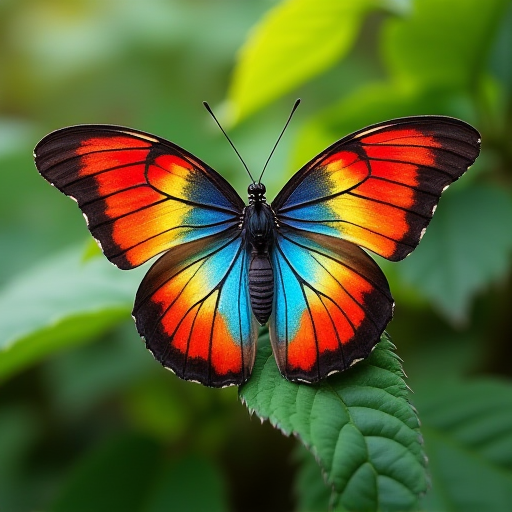
Why Do Butterflies Have Colorful Wings?
Butterflies are among the most visually captivating insects, renowned for their vibrant and diverse wing patterns. From the shimmering blues of the Morpho butterfly to the fiery hues of the Monarch, their colors never fail to captivate human observers. However, the purpose of these colorful wings extends far beyond mere aesthetic appeal. This article delves into the evolutionary and ecological reasons behind the colorful wings of butterflies.
1. Camouflage and Predator Avoidance
One of the primary reasons butterflies have colorful wings is for survival. While their colors are vivid, many butterfly species use these hues to blend into their surroundings effectively. This phenomenon, known as camouflage, helps them avoid predators. For instance, the patterns on a butterfly's wings can mimic the appearance of leaves, bark, or flowers, making them difficult for predators to spot.
Moreover, some butterflies have evolved to display eye-like patterns on their wings. These "eyespots" can startle potential predators or direct their attacks away from vital body parts, allowing the butterfly a greater chance to escape unharmed.
2. Warning Coloration
Another survival strategy is the use of bright, contrasting colors as a warning signal, a concept known as aposematism. Many butterfly species are unpalatable or toxic due to the plants they consume during their larval stage. For example, the Monarch butterfly is toxic to many predators because of the milkweed it eats as a caterpillar. Its bright orange and black wing colors serve as a warning to potential predators about its toxicity. This form of coloration acts as a deterrent, reducing the likelihood of predation.
3. Mating and Reproduction
Colorful wings also play a crucial role in the reproductive strategies of butterflies. Many species rely on visual signals to attract mates. Vibrant colors and intricate patterns can be indicators of a healthy and viable mate, thus playing a role in sexual selection.
For instance, male butterflies often have more vivid colors compared to females, which they use to court potential mates. These displays can be a sign of genetic fitness, as the ability to produce such vibrant colors may indicate good health and an ability to evade predators.
4. Thermoregulation
Colorful wings can also serve a more functional purpose related to temperature regulation. Butterflies are ectothermic, meaning they rely on external sources of heat to regulate their body temperature. Darker wing colors can absorb more sunlight, warming the butterfly more quickly, which is particularly advantageous in cooler climates or during the early morning.
5. Species and Individual Identification
Color patterns help butterflies identify members of their own species, which is essential for mating and social interactions. In species with overlapping ranges, distinct color patterns can prevent hybridization by ensuring that individuals recognize and mate with members of their own species.
Additionally, within a species, variations in color can help individuals recognize each other, which may be important in maintaining social structures or territories.
6. Evidence of Evolutionary Processes
The diversity of butterfly wing colors is also a testament to the complex processes of evolution. Natural selection, sexual selection, and genetic drift all contribute to the wide variety of colors and patterns observed in butterflies. The specific colors and patterns of a butterfly can provide insight into its evolutionary history and ecological niche.
Conclusion
The colorful wings of butterflies are not merely for human admiration; they serve multiple critical functions that enhance survival and reproduction. These functions include camouflage, warning coloration, mating displays, thermoregulation, and species identification. Each of these roles underscores the intricate ways in which butterflies have adapted to their environments over millions of years. Understanding these roles provides a deeper appreciation of the complex interplay between evolution, ecology, and the stunning natural beauty of butterflies.
